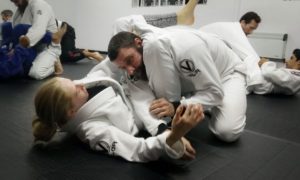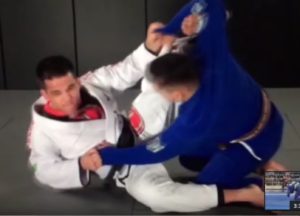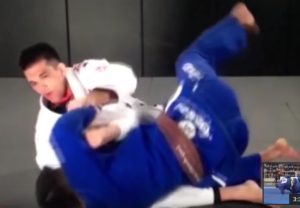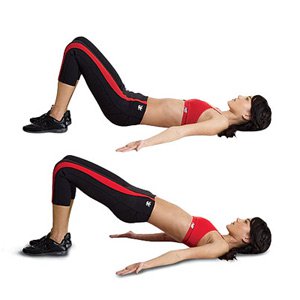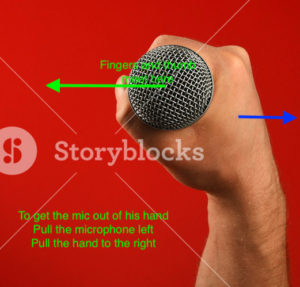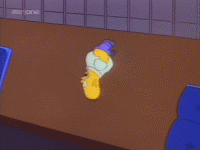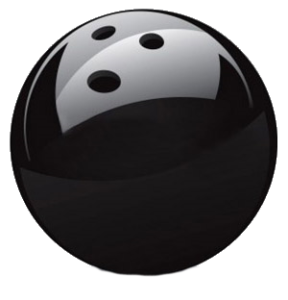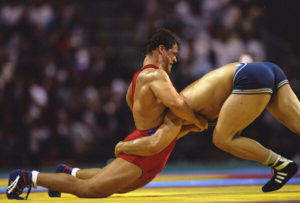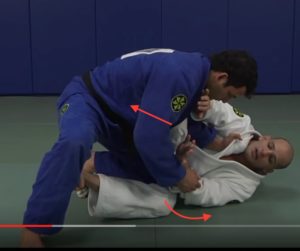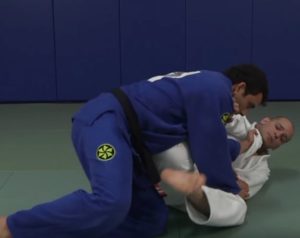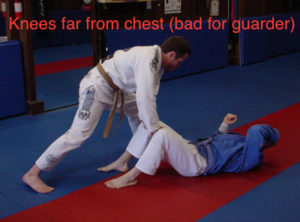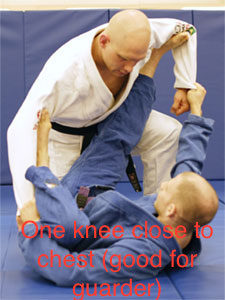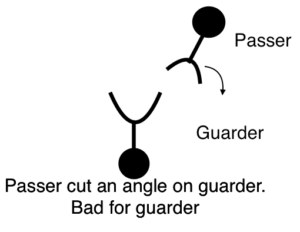Closed guard retention principles: How to develop an unpassable guard
Here are some important principles to understand for retaining closed guard against an opponent who tries to break it open, whether or the knees or standing up.
Hiking the hips up
Your opponent will try to break your guard open by putting a lot of pressure with his back against your ankles. By moving your hips forward and up, you can move your ankles farther back, away from his back, which alleviates the pressure.
See ‘An Easy ‘Tweak’ To Make Your Closed Guard Much Harder to Pass’ by Stephan Kesting for more:
and ‘Concepts When Doing Closed Guard by Travis Stevens’
Posture breaking
In order for an opponent to break your guard open, typically they need their head to be up (although there are some exceptions such as the Sao Paulo pass). Therefore, you want control over their head and the ability to pull it down.
Attacking the front hand
In order to keep their posture, the opponent needs a point of base on your body in front of their head. The more forward the hand is, the more effective it is in pushing the opponent back and up. Therefore, you need to to perform some kind of grip break or movement to get rid of the front hand, so it can’t push on you effectively. I don’t want to get into details of all the different grip breaks you can do, since this is about core principles.
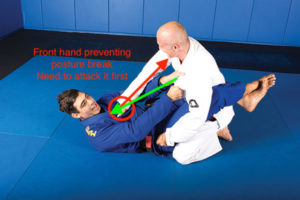
Pulling with your knees
When pulling the opponent down to break his posture, a common mistake is to rely too heavily on your arms to pull him forward. You need to use your legs. Use your legs in an arcing movement to pull him up and forward. This may allow you to pull him forward even if he has a hand posted for base. You should also pull diagonally off to one side, so that the opponent can’t use both hands equally.
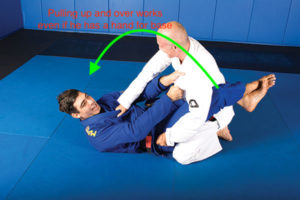
Tilting and moving your hips side to side
If you think of your body as a table, your opponent is trying to put his hands on the table and push away from it. If the table is constantly tilting from side to side, his hands will slip off, allowing you to pull him forward. You constantly should look for opportunities to scoot your hips off to one side and tilt your hips (one side up, the other side down), which will give you better opportunities for posture breaking.
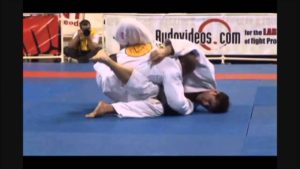
Sitting up
Sometimes, for whatever reason, you can’t pull your opponent’s head down to your chest, but you can sit up, as in the hip bump sweep, to bring your chest to their head and then clinch them and bring them back down. Always look for this opportunity when the opponent has their head up. Sometimes, as their head is coming up, you can sit up and do a hip bump sweep that will be extra effective because you’re going with their momentum.

Stopping the opponent from standing up
- Lifting the hips up to put weight down into the opponent’s legs/low back.
- Pulling in and down with the heels
- The timing for doing it is when the top person leans forward a little when trying to stand up.
- If the opponent manages to post one foot up, you should put all the weight towards the knee that’s still on the ground.
Related videos
FloGrappling account required: https://www.flograppling.com/video/5629183-master-class-roger-gracie-teaches-the-best-closed-guard-in-the-world
For more from me on guard retention, check my guard retention category on this blog:
